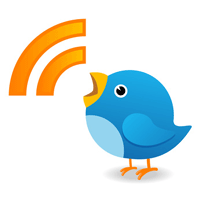
Get grounded before you jump into the fire & start responding
Target audience: Nonprofits, cause organizations, foundations, NGOs, social enterprises, businesses, Web publishers, educators.
Guest post by Carie Lewis
Humane Society of the United States
 Listening is the first step in social media. You have to listen to what others are saying about you before you jump into the fire. Listening will tell you what people are saying, and where they are saying it, so you know where to get started.
Listening is the first step in social media. You have to listen to what others are saying about you before you jump into the fire. Listening will tell you what people are saying, and where they are saying it, so you know where to get started.
Many of these tools are Twitter-focused, because Twitter is the easiest place to get started in listening.
Here are five free tools I recommend to get started.
Tweetbeep: Twitter alerts via email
1Tweetbeep is essentially Google Alerts for Twitter. Whenever you’re mentioned on Twitter, you’ll get sent an email with details of that mention. You can specify any search term you want. This is great for people who are not ready for the power of Tweetdeck of HootSuite with all their bells and whistles. Twitter is the most real-time account you have of what people are saying about you, so it’s really important to have a Twitter listening tool that matches your comfort level.
Tweetdeck: Your command center
2Tweetdeck is great because it runs in the background and gives you desktop alerts for mentions, similar to Microsoft Outlook when you get a new email. You can customize the different columns and have an array of search terms for people talking about you on Twitter. For example, mine has the following columns: @ replies of my personal Twitter account, @ replies of my organizational account, mentions of “humane society,” mentions of “hsus” and direct messages. When you’re ready to get real serious, ask your IT department for a second monitor that you can put just Tweetdeck on. (See photo at top.)
Kurrently: Check your public persona
3It is amazing, and scary, how many people still do not lock down the privacy on their Facebook profiles. That’s what makes Kurrently so useful: It’s a search engine for public Facebook updates. It actually now pulls in a lot more than Facebook updates, but that’s what I find it most useful for.
Twitalyzer: Turn monitoring into metrics
4It is very important to think about your goals and how you’re going to measure success when diving into a new online venture, and listening is no different. There are many tools out there for measurement, but I like Twitalyzer, because of the breadth of statistics it provides and its ease of use. The graphs are pretty, too. It provides data such as number of followers, number of tweets, number of retweets, top hashtags, number of mentions, etc – which are great metrics. For Facebook, check out their built-in analytics for your fan page.
Google Alerts: Trusty standby is still critical
5You’ve been using Google Alerts for some time now, right? At the bare minimum, you should use Google Alerts for your organization’s name, acronym, prominent staff names like your CEO or executive director and large campaigns you’re working on. Depending on the number of mentions you get, you’ll probably want to set the alerts to come to your in-box as they happen so you know quickly what’s being said and can determine a response, if needed.
How the Humane Society reacts to negative comments
Those are my top five. What are yours? Please add them in the comments!
Once you start listening and come across negative conversations, what should you do? When we see something being said about us, we kick a simple process into gear:
- Identify the person behind it. What kind of influence do they have – how many followers do they have, what kind of people are following them? Are they a known detractor or troll?
- Identify the tone. Are they annoyed? Angry? REALLY angry? This will give you an idea of how easily they can be persuaded.
- Decide whether or not to respond. Based on tone and influence, you should make an executive decision on who this person is and if they can be turned around.
- Craft the response. We work with our PR team to get our official stance or response on the issue, then craft it under 140 characters or less – (which can prove to be very challenging with a PR response!
- Deliver the response. Always deliver in the medium the conversation began. For instance, if someone says something about you on Twitter, don’t go seeking them out on Facebook to send them a message.
- Monitor the aftermath. Don’t just respond and walk away. Monitor the conversation following, but know when to reach a stopping point and move on.
This is mostly for negative conversation. If it’s positive, you should absolutely @reply them, follow them or direct message them to start a relationship with them! If on Facebook, find their fan page and add them to your favorite pages, tag them in a status update, or post a message on their page from your fan page account.
It’s all about relationship building. Negative comments can often be turned into positive experiences! We often have listening experiences where people will say something negative, we’ll respond, and they can’t believe we were paying attention and took them time to respond to them. This kind of customer service is becoming more popular, but is still new – so take advantage of it!
Related
• How to use Twitter to monitor your brand
• Best Twitter dashboards for nonprofits
• How to use Twitter to monitor your brand
 This work is licensed under a Creative Commons Attribution-NonCommercial-ShareAlike 3.0 Unported.
This work is licensed under a Creative Commons Attribution-NonCommercial-ShareAlike 3.0 Unported.














Your Twitalyzer link is a page not found
Thanks much. Twitalyzer changed its name and link a while back. Just updated the link so it works.